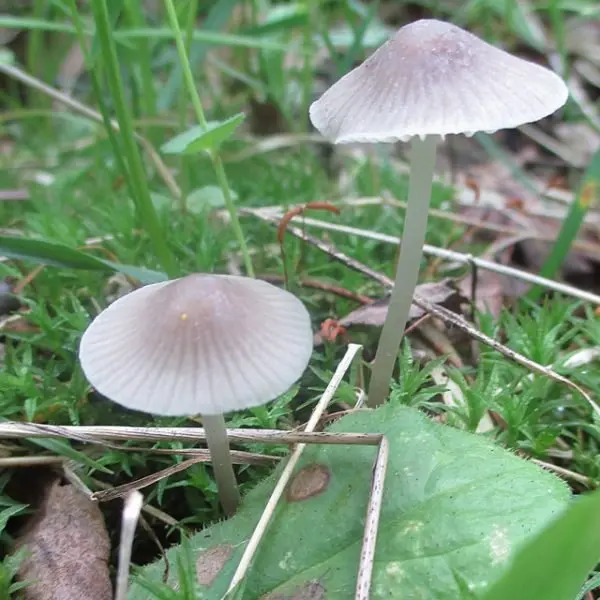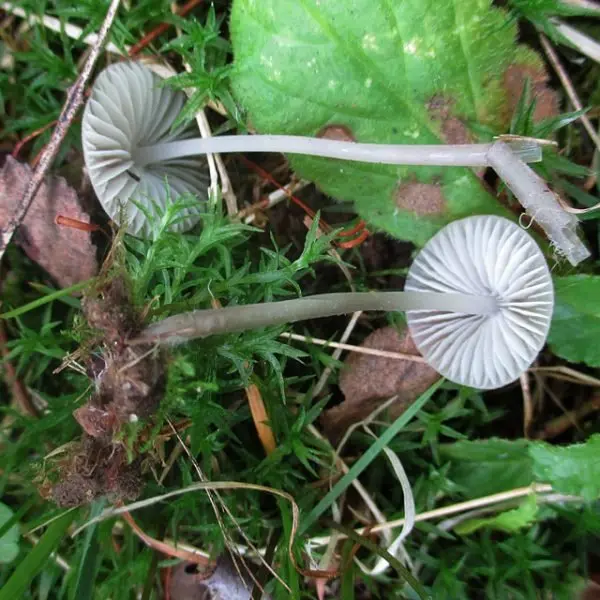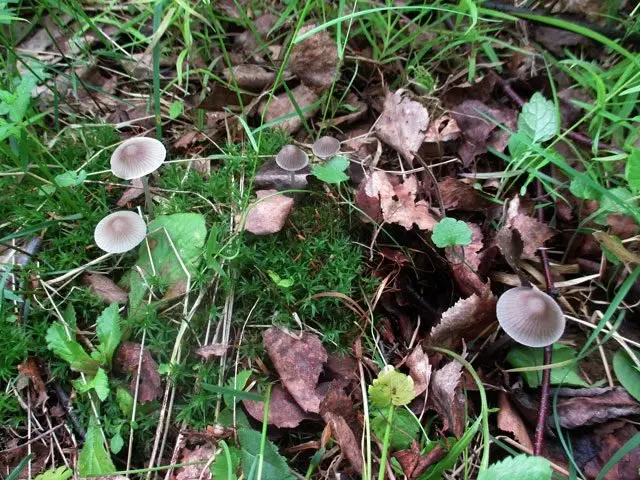Mycena milkweed (Mycena galopus)
- Division: Basidiomycota (Basidiomycetes)
- Subdivision: Agaricomycotina (Agaricomycetes)
- Class: Agaricomycetes (Agaricomycetes)
- Subclass: Agaricomycetidae (Agaricomycetes)
- Order: Agaricales (Agaric or Lamellar)
- Family: Mycenaceae (Mycenaceae)
- Genus: Mycena
- Type: Mycena galopus (Mycena milkweed)
:
- Mycena fusconigra

head 1-2,5 cm in diameter, cone-shaped or bell-shaped, flattened with a tubercle with age, the edges can be wrapped up. Radially-striated, translucent-striped, smooth, matte, as if frosty. Color grey, grey-brown. Darker in the center, lighter towards the edges. May be almost white (M. galopus var. alba) to almost black (M. galopus var. nigra), may be dark brown with sepia tones. There is no private cover.
Pulp white, very thin. The smell is from completely unexpressed, and to a faint earthy or faint rare. The taste is not pronounced, soft.
Records infrequent, reaches the stem 13-18 (up to 23) pieces in each mushroom, adherent, possibly with a tooth, possibly slightly descending. The color is white at first, with aging white-brownish or light gray-brownish. There are shortened plates that do not reach the stem, often more than half of all plates.

spore powder white. Spores are elongated (elliptical to almost cylindrical), amyloid, 11-14 x 5-6 µm.
Leg 5-9 cm high, 1-3 mm in diameter, cylindrical, hollow, of colors and shades of the cap, darker towards the bottom, lighter towards the top, even cylindrical, or slightly expanding towards the bottom, coarse white fibers can be found on the stem. Medium elastic, not brittle, but breakable. On a cut or damage, with sufficient moisture, it does not emit abundant milky juice (for which it is called milky).
It lives from the beginning of summer until the end of the mushroom season in forests of all kinds, grows in the presence of leaf or coniferous litter.

Mycenas of other types of similar colors. In principle, there are many similar mycenae growing on the litter and from under it. But, only this one secretes milky juice. However, in dry weather, when the juice is not noticeable, you can easily make a mistake. The presence of coarse white fibers at the bottom of the leg will help out, along with the characteristic “frosty” look, but, in the absence of juice, this will not give a 100% guarantee, but will only greatly increase the likelihood. Some of the mycenae, like alkaline, will help weed out the smell. But, in general, to distinguish this mycene from others in dry weather is not the easiest thing to do.
This mycena is an edible mushroom. But it does not represent any gastronomic interest, as it is small, thin and not abundant. Moreover, there are many chances to confuse it with other mycenae, some of which are not only inedible, but also poisonous. Probably for this reason, in some sources, it is either listed as inedible or not recommended for use in cooking.









